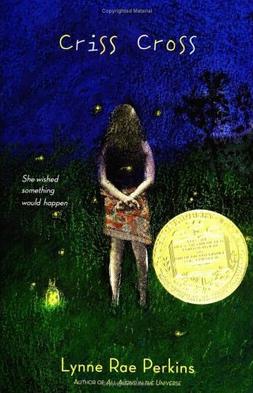
Author: Lynne Rae Perkins
Narrator: Danielle Ferland
Published by: Harper Childrens Audio (2006)
Originally Published (2005)
Length: 5 hours, 8 minutes
Award: Newbery Medal
My Rating: 2/5
Amazon Rating: 3/5 (72 customer reviews)
Narrator: Danielle Ferland
Published by: Harper Childrens Audio (2006)
Originally Published (2005)
Length: 5 hours, 8 minutes
Award: Newbery Medal
My Rating: 2/5
Amazon Rating: 3/5 (72 customer reviews)
This is a hard book to review--I've written something and erased it about ten times now. Can I just say that I didn't like it? The first disc was frustrating to listen to, because I didn't really know that there wasn't much of a plot, and I kept waiting for something to happen. The narrator's voice was completely wrong for the tone of the book. Once I accepted that this wasn't a plot-driven novel, it got a little better, but I have to admit that the only reason I continued to listen is because when I have an audio book in the car, I follow the path of least resisitance, which is to not take out the CD. There are moments when Perkins really captures the essence of adolescence, and looking back to when I was younger, I could identify with some of the feelings and agree that that is how things felt. I just am not sure that teens living in the midst of this time of transition in their lives would find as much meaning in it. It had more of a reminiscent feel, maybe because the setting is sometime around the 70's.
I assume this won the Newbery Medal because it was somewhat innovative. I think some of that quality was lost in the audio version (haikus, song lyrics, etc. that weren't so obvious listening to.) I much preferred Princess Academy by Shannon Hale that won the Newbery Honor for that year.
Bottom line: Writing about nothing may have worked for Seinfeld, but not for Criss Cross. If you've got the five hours it takes to listen to this audio book, watch about 10 Seinfeld reruns instead!
I assume this won the Newbery Medal because it was somewhat innovative. I think some of that quality was lost in the audio version (haikus, song lyrics, etc. that weren't so obvious listening to.) I much preferred Princess Academy by Shannon Hale that won the Newbery Honor for that year.
Bottom line: Writing about nothing may have worked for Seinfeld, but not for Criss Cross. If you've got the five hours it takes to listen to this audio book, watch about 10 Seinfeld reruns instead!








